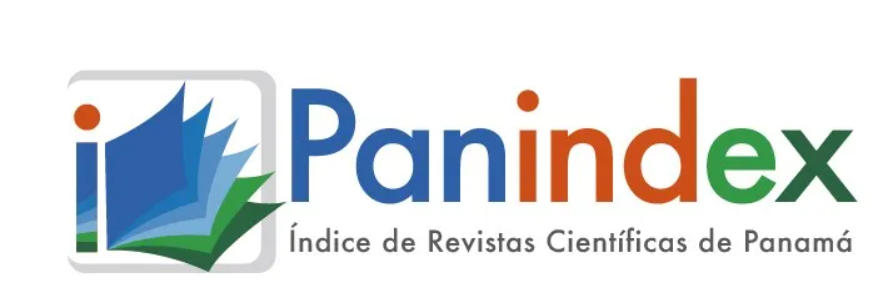The content of the publications and the links suggested in them are the sole responsibility of the authors and not of the METROPOLITAN UNIVERSITY OF EDUCATION, SCIENCE AND TECHNOLOGY (UMECIT) or DIALOGUS magazine. They are protected by international copyright laws as well as the UMECIT and DIALOGUS logos, hence their reproduction is totally prohibited.
This work is licensed under a Creative Commons Attribution-NonCommercial-NoDerivatives 4.0 International License.
The authors maintain the copyright and transfer the right of the first publication to the journal, with the article registered with Creative Commons Attribution-NonCommercial-NoDerivatives License, which allow others They can download the works published in this magazine and share them with other people, as long as their authorship is recognized, but they cannot be changed in any way nor can they be used commercially.
Authors are recommended to include their work in social networks such as Researchgate and institutional repositories once the article or visible fact has been published on the journal page, without forgetting to include the digital document identifier and the name of the journal.



Abstract
The transition from engineer to educator within the context of Industry 5.0 involves a significant shift in both professional focus and teaching methodology. This new industrial era, characterized by advanced technologies such as artificial intelligence, robotics, and the Internet of Things (IoT), enables educators to create personalized and intelligent manufacturing environments. This not only enhances teaching methodologies but also equips the next generation of engineers with the necessary skills to lead in the evolving industrial landscape. The integration of these technologies, alongside a focus on sustainable and human-centered practices, is crucial for bridging the gap between academia and industry, ensuring that students are well-prepared to face future engineering challenges.
Simultaneously, universities face the challenge of adapting to the profound changes of Society 5.0, which requires professionals with digital competencies and competitive skills. This adaptation process includes analyzing current technological developments and their impact on new professionals, highlighting tools such as artificial intelligence, IoT, robotics, and Big Data. In Society 5.0, intelligent technologies and the cultivation of digital skills are revolutionizing work processes and the dynamics between humans and technology. Effective integration of professionals with these new technologies and the promotion of ethical-technological competencies are essential to enhance the competitive advantage of organizations and ensure continuous professional growth.
References
Carro S., J., & Sarmiento., S., (2022). El factor humano y su rol en la transición a Industria 5.0: una revisión sistemática y perspectivas futuras . Entreciencias: Diálogos En La Sociedad Del Conocimiento, 10 (24). https://doi.org/10.22201/enesl.20078064e.2022.24.81727
Cavanaugh, C., Barbour, M., & Clark., T. (2009). Research and Practice in K-12 Online Learning: A Review of Open Access Literature. International Review of Research in Open and Distance Learning. DOI: 10. 10.19173/irrodl.v10i1.607. https://www.researchgate.net/publication/26588061_Research_and_Practice_in_K-12_Online_Learning_A_Review_of_Open_Access_Literature
Darias P., S., (2023). El impacto de la IA en la tomas de decisiones empresariales., Intelequia blog., https://intelequia.com/es/blog/post/el-impacto-de-la-ia-en-la-toma-de-decisiones-empresariales
Fernández, C.M., (2024). Industria 5.0: una evolución más humana, sostenible y resiliente, cuerva*, https://cuervaenergia.com/es/comunidad/sostenibilidad/industria-5-0/
García-Contreras , J. M., & Mendoza-Hernández , L. E., (2023). El impacto de la Industria y Sociedad 5.0 en la educación. Uno Sapiens Boletín Científico De La Escuela Preparatoria No. 1, 5 (10), 15-18. Recuperado a partir de https://repository.uaeh.edu.mx/revistas/index.php/prepa1/article/view/10387.
Nelson, J., Biddle, J., & Shapira, P., (2023). Applications and Societal Implications of Artificial Intelligence in Manufacturing: A Systematic Review. https://www.researchgate.net/publication/372950460_Applications_and_Societal_Implications_of_Artificial_Intelligence_in_Manufacturing_A_Systematic_Review
Ñique-Carbajal., C, Pérez-Loaiza., Y, Ñique-Valverde., F., & Ñique-Valverde A., (2022). Networking y marketing académico en docentes de una Universidad de Lambayeque-Perú. FEM 2022; 25 107-14. doi:10.33588/fem.253.1197., https://scielo.isciii.es/pdf/fem/v25n3/2014-9832-fem-25-3-107.pdf
Jiewu, L., Xiaofeng, Z., Zhiqiang, H., Xingyu, L., Pai, Z., Xueliang, Z., Dimitris, M., Baicun W, Qinglin, Q., Haidong, S., Jiafu, W., Xin, C., Lihui, W., & Qiang L., (2024). Unlocking the power of industrial artificial intelligence towards Industry 5.0: Insights, pathways, and challenges, Journal of Manufacturing Systems, Volume 73, 349-363, ISSN 0278-6125, https://doi.org/10.1016/j.jmsy.2024.02.010.
Narkhede, G., Pasi, B., Rajhans, N., & Kulkarni, A., (2024). Industry 5.0 and sustainable manufacturing: a systematic literature review Industry 5.0 and SM. Benchmarking: An International Journal. 1463-5771. 10.1108/BIJ-03-2023-0196. https://www.researchgate.net/publication/379824461_Industry_50_and_sustainable_manufacturing_a_systematic_literature_review_Industry_50_and_SM
Paschek, D., Luminosu, C-T., & Ocakci, E., (2022). Industry 5.0 Challenges and Perspectives for Manufacturing Systems in the Society 5.0., Journal: Advances in Sustainability Science and Technology Sustainability and Innovation in Manufacturing Enterprises, 2022, p. 17-63, https://doi.org/10.1007/978-981-16-7365-8_2
Pilcher, N., Galbrun, L., Craig, N., Murray, M., Forster, A. M., & Tennant, S., (2020). Role requirements in academic recruitment for Construction and Engineering. European Journal of Engineering Education, Volume 46 (2), 247-265. https://doi.org/10.1080/03043797.2020.1725451
Prince, M., (2004). Does active learning work? A review of the research. Journal of engineering education, 93(3), 223-231. https://doi.org/10.1002/j.2168-9830.2004.tb00809.x
Kraus, S., Ferraris A., & Bertello A., (2023). The future of work: How innovation and digitalization re-shape the workplace, Journal of Innovation & Knowledge, Volume 8, Issue 4, 2023, 100438, ISSN 2444-569X, https://doi.org/10.1016/j.jik.2023.100438
Savery, B. M., (2006). Problem-based learning: An instructional methodology based on sound principles. Journal of engineering education, 95(1), 35-41. Running Head: ONLINE DISCUSSION (ross.mayfirst.org)
Downloads
Publication Facts
Reviewer profiles N/A
Author statements
- Academic society
- Universidad Metropolitana de Educación, Ciencia y Tecnología
- Publisher
- Universidad Metropolitana de Educación, Ciencia y Tecnología




















